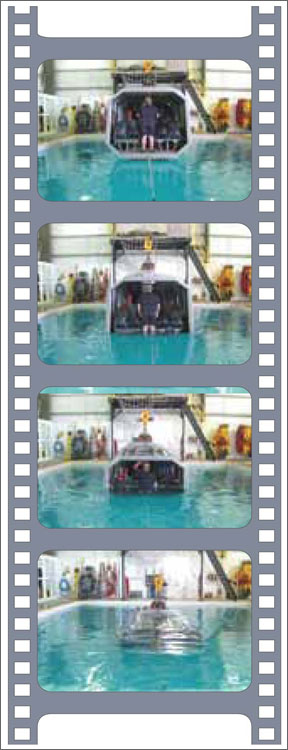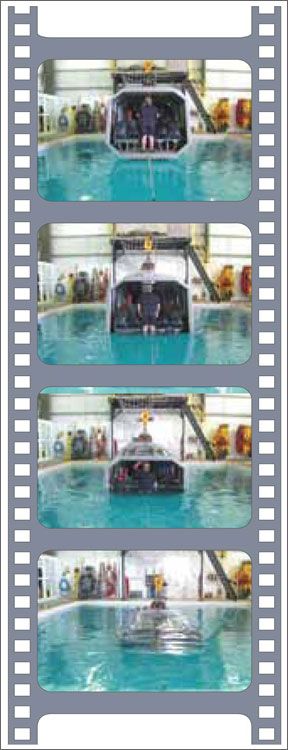Ditching Dj Vu Enjoyed the ditching training article in the September 2010 issue. Took me back 70 years to my Navy pilot training at Pensacola and the feared Dilbert Dunker we all had to experience. A few things I might add as advice for anyone needing to ditch is: Thanks for helping me recall nearly 70 years ago. Howie Keefe Diesel Numbers I have read your article on aircraft diesels, but am a bit puzzled since I cannot relate to our reality in Europe. For example, here in northern Sweden, the price of avgas 100LL is roughly about double that of Jet A. This means that in our club, we fly our very fine and powerful Cessna 182 SMA for about the same price per hour as our old PA-28-161. Besides, for almost two years the SMA has performed excellent, significantly better than the factory figures which obviously are very conservative. (We did not even consider the Thielert as an option since, in our view, is not an aviation engine.) I think you should have mentioned the completely different price pattern of aviation fuel in Europe compared to the U.S. when you discussed the economy of diesels. You are still right about the problems with low volumes of diesels on the market, which makes service rather rare in northern Europe. Stellan Nilsson Borescope Query I have read a lot about the value of doing a borescope to gather information when troubleshooting maintenance issues, before pulling a cylinder. However, many shops don’t have one, and I am considering getting my own that I could supply to whatever shop is working on my aircraft. Checking with Aircraft Spruce, these seem to be in three price ranges: $200 to $300, $800 and $1800 to $2000. I cant tell the difference for this application just from the descriptions. It would be very useful if you could do a short review of options for private acquisition of a borescope, especially for cylinder checking, but also other uses on the aircraft. Vince Fischer Our colleague Kim Santerre, editor of Light Plane Maintenance, tells us that low-cost borescopes wont do the job. He recommends the Hawkeye by Gradient Lens Corp. as the best option, either solid or flex. With the attachments, it will cost about $1000. This is the lowest-cost practical scope for cylinders. Headset Headache Thanks for the great review of noise- cancelling headsets in the September issue. I own older versions of Bose, David Clark and Lightspeed ANR headsets and Im looking forward to a new one because the Bose broke at a critical plastic part. The headset was fairly old, but had minimal use-maybe a couple of dozen times. I suspect that the plastic may have deteriorated due to the temperatures here in Arizona. I contacted the factory and they insisted that they needed to “rebuild” the headset for a substantial chunk of the retail price, instead of just replacing the part. I know that Bose is having to cut back during the recent economic unpleasantness, but this policy stands in sharp contrast to David Clark, which not only repaired a broken part for free, but paid for the shipping. Performance is important, but standing behind the product for the long term can be a deciding factor for me. I have several other Bose products, but I wont be adding to them in the future. Miller McPherson LED Legality I own a production 1979 Piper Archer II. My landing light reminds me of what a 90-year old must see with his glasses off. Because there is no STC for the Whelen Parmetheus yet, that means I cannot install it correct? I just got my airplane this summer and I think all the basic Cherokees use the 4509, but Im not positive. Sam Buchanan The PA-28s do use the GE 4509. As we noted in the article, our view is that no STC or PMA is required and our advice is to simply buy the LED you like and install it. In any case, at press time, Whelen contacted us to report they have received STC approval for the Parmetheus lamp. Its available from Aircraft Spruce. And by the way, our article offered two spellings of Whelen, but the one with two es is the correct version. We apologize for the lapse.
Mulberry, Florida
Via e-mail
Via e-mail
Cascabel, Arizona
Prescott, Arizona
Letters: November 2010
Do it we’ll off shore, where the water is deep enough so that if you turn upside down, there is enough space to drop out.
Open a door or canopy before you hit.
Shed your shoes if possible while in the air.
Long pants, as the Navy teaches, can become a flotation device. Knot the ends, swoop through the air to trap air-the wetter they get, the better they hold air. You have to keep doing it.


